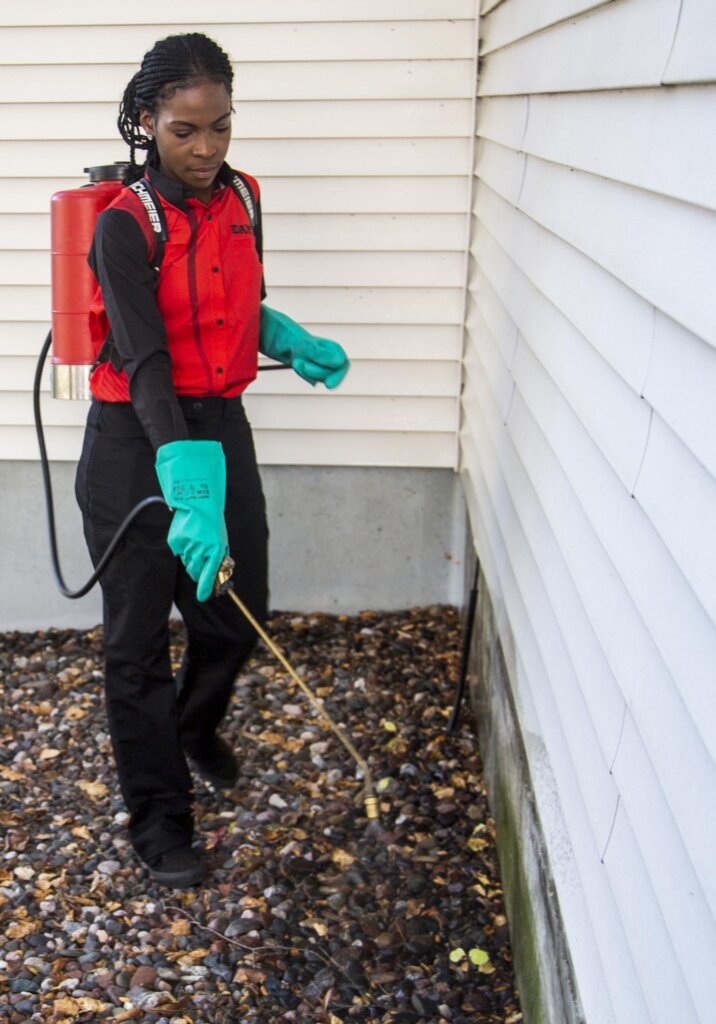Affordable Pest Management Plans Offered by Pest Control Lockhart
Affordable Pest Management Plans Offered by Pest Control Lockhart
Blog Article
Exploring Invasion and Treatment Approaches worldwide of Pest Control
The landscape of bug control includes a myriad of challenges, especially as problems of usual household insects proceed to advance. By incorporating preventative steps with sophisticated monitoring strategies, such as Integrated Pest Management (IPM), property owners can much better guard their settings.

Typical Family Vermin
When it involves handling our home, understanding common family parasites is essential. These insects not only disrupt our comfort but can also position health and wellness threats and damages building. One of the most widespread house parasites consist of ants, roaches, rodents, termites, and bed pests.
Ants, commonly seen foraging in kitchen areas, can contaminate food and develop large swarms. Rats, consisting of mice and rats, can create architectural damage and carry conditions like hantavirus and salmonella.
Acknowledging the signs of these bugs, such as droppings, nests, or bite marks, is important for early treatment (Pest Control Lockhart). Appropriate hygiene methods, securing entrance factors, and preserving a clutter-free environment are efficient preventative measures. By recognizing these common house insects and recognizing their behaviors, home owners can take positive actions to reduce infestations, making sure a healthier living atmosphere
Recognizing Insect Infestations
Pest infestations can escalate rapidly, transforming a small nuisance right into a substantial trouble if not addressed quickly. Common elements contributing to invasions include poor sanitation, architectural susceptabilities, and seasonal modifications that drive pests inside.
Recognizing the sort of bug is vital, as various types show diverse habits and reproductive prices. Rats might establish nests in covert areas while pests like roaches prosper in moist environments. Early detection often depends upon recognizing indicators such as droppings, munch marks, or uncommon sounds, which can indicate a trouble before it becomes extreme.
Warm, moist environments can help with the rapid growth of parasite populations, while adjustments in landscaping or building and construction can accidentally create favorable environments. An educated strategy to understanding these dynamics lays the foundation for reliable bug monitoring methods in the future.
Treatment Approaches and Techniques
Reliable therapy methods and methods are important for mitigating parasite infestations and restoring a risk-free setting. A complex approach is typically best, integrating chemical, organic, and mechanical approaches tailored to the particular bug and the extent of the problem.
Chemical treatments include using insecticides and herbicides, which can efficiently eliminate insects. Correct application and adherence to safety and security standards are crucial to minimize threats to human beings and non-target microorganisms. Integrated Parasite Monitoring (IPM) motivates the sensible use chemicals as a last resort, relying instead on tracking and threshold degrees to establish treatment demands.
Organic control methods include introducing natural killers or bloodsuckers to reduce parasite populaces. This approach is progressively preferred, specifically in agricultural settings, as it promotes ecological sustainability.
Mechanical techniques, such as catches and barriers, offer immediate remedy for bugs without presenting chemicals. Choices consist of sticky catches for bugs or physical obstacles for rodents.
Ultimately, the choice of therapy technique ought to think about the details pest, the environment, and possible impacts on human wellness and communities. A well balanced mix of these methods can effectively manage infestations while promoting long-lasting parasite control services.
Preventive Procedures for Homes
Proactively dealing with insect concerns prior to they escalate is essential for keeping a healthy and balanced home atmosphere (Pest Control Lockhart). Executing effective safety nets can substantially minimize the chance of problems, eventually protecting both your building and well-being

Proper landscaping also plays a critical role in prevention. Keeping hedges and trees trimmed away from the residence lowers the chances of pests discovering their way indoors. Furthermore, make certain that drainage systems are operating effectively to stop standing water, which can attract mosquitoes and other pests.
Lastly, regular assessments are advisable. Regularly checking for indications of insect activity permits very early treatment. By adopting these precautionary procedures, house owners can create an environment that is less welcoming to parasites, therefore improving their overall lifestyle and decreasing the requirement for substantial bug control treatments.
Industrial Insect Control Methods
An extensive strategy to industrial parasite control is crucial for companies intending to maintain a risk-free and sanitary environment. Reliable strategies entail a combination of regular examinations, employee training, and the application of Integrated Pest Administration (IPM) methods.
Normal assessments allow very early detection of bug task, enabling for site link prompt treatment. Companies need to create a regular timetable for these evaluations, concentrating on high-risk areas such as kitchen areas, storage rooms, and waste disposal websites. Staff member training is similarly vital; personnel needs to be informed on the signs of parasite infestations and the importance of reporting them instantly.
Implementing IPM methods aids mitigate pest issues sustainably. This consists of habitat adjustment, such as securing access points and decreasing mess, as well as using natural deterrents before turning to chemical treatments.

Furthermore, working together with a licensed parasite control copyright makes certain accessibility to specialist understanding and advanced treatment choices. This partnership can result in personalized insect control plans tailored to the specific requirements of business, lessening threats and boosting general effectiveness. Inevitably, a positive and informed method cultivates a pest-free environment, protecting both public health and service credibility.
Verdict
In verdict, effective insect control requires an extensive understanding of typical family pests and their behaviors, combined with targeted treatment approaches. Carrying out preventative procedures together with therapy techniques such as Integrated Bug Management and organic control improves the capacity to mitigate problems. Regular examinations and a combination of chemical and mechanical solutions even more contribute to maintaining pest-free settings. Ultimately, an all-round strategy to pest administration is important for safeguarding living rooms from unwanted intruders.
Report this page